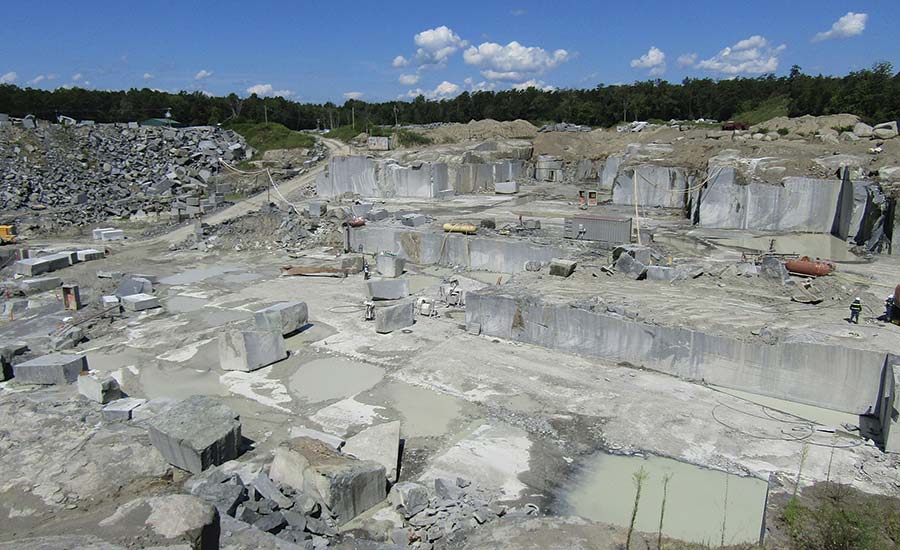The Covert Treasures: Exploring Granite Quarries in South Africa
The Covert Treasures: Exploring Granite Quarries in South Africa
Blog Article
Uncovering the Rich History and Lasting Practices of Granite Quarrying
As we depend on the precipice of uncovering the intricate tapestry of granite quarrying, a trip with time reveals not simply the physical act of drawing out stone but likewise the cultural and historic relevance woven into the extremely fabric of this technique. From the old origins that laid the foundation for contemporary quarrying techniques to the lasting techniques that are shaping the future of this market, each sculpt mark on granite surfaces tells a tale waiting to be unearthed (granite quarries in south africa). The heritage of granite quarrying stretches much beyond mere removal; it is a testament to human resourcefulness, durability, and the enduring appeal of this magnificent rock
Ancient Origins of Granite Quarrying
Going back to old people, the technique of quarrying granite has been an essential component of human history and architectural improvement. The earliest evidence of granite quarrying go back to old Egypt, where substantial pyramids and intricate sculptures were crafted from this durable stone. The Egyptians made use of primitive devices to draw out granite blocks from quarries, showcasing the value of this product in their significant building and constructions.
Relocating forward in background, the Greeks also made considerable contributions to the quarrying of granite. The Greeks made use of granite in different architectural wonders, such as holy places and statues, showing their ability in shaping and sculpting this sturdy rock. The Romans further fine-tuned the techniques of quarrying granite, employing sophisticated devices like blades and hammers to essence and form granite for their iconic structures.
Via the centuries, the technique of quarrying granite has developed, with contemporary technologies improving performance while preserving the ageless charm of this natural rock - granite quarries in south africa. From old people to modern builders, the heritage of granite quarrying remains to shape our world
Advancement of Quarrying Strategies
The evolution of quarrying techniques has actually been marked by a continual progression towards better effectiveness and precision in drawing out granite. From the simple techniques used by our forefathers to the innovative innovations made use of in modern-day quarrying procedures, the sector has actually gone through significant developments. Early quarrying techniques included manual labor with standard tools such as chisels, hammers, and wedges to remove granite blocks from the planet. As human beings advanced, techniques like my site fire-setting and primitive dynamites were presented to facilitate the extraction procedure.
Advancements in computer-controlled devices and 3D modeling have actually maximized quarrying operations, leading to marginal environmental impact and improved sustainability practices. As the demand for granite proceeds to increase, the advancement of quarrying methods continues to be indispensable to conference sector requires effectively and sustainably.
Social Relevance of Granite
Granite holds a profound social relevance across various worlds due to its enduring existence in building masterpieces and revered monuments. The cultural significance of granite extends beyond its physical qualities; it personifies resilience, stability, and timelessness, making it an icon of sustaining traditions and practices.

Lasting Practices in Quarrying
In the middle of the abundant background of granite quarrying and its cultural value lies a growing emphasis on sustainable practices within the sector. As environmental understanding and concerns about source deficiency have increased internationally, the quarrying industry has actually progressively embraced lasting approaches to minimize its effect on the setting and surrounding areas.

Moreover, improvement and rehabilitation of quarry websites post-extraction are integral to lasting techniques. By recovering quarried locations to an all-natural or helpful state, such as developing wildlife environments or recreational areas, quarriers can counter the environmental impact of their procedures and contribute positively to the local community.
Legacy of Granite Quarrying
With a historical background steeped in craftsmanship and commercial development, what withstanding impact has granite quarrying left on the landscape of modern society? The heritage of granite quarrying transcends mere extraction practices; it has shaped building wonders, urban landscapes, and cultural heritage worldwide. The sturdy nature of granite has actually made it a recommended selection for monuments, buildings, and infrastructure, standing as a testament to the ability and artistry of quarry employees throughout generations.
Additionally, the economic footprint of granite quarrying can not be ignored. The industry continues to give employment chances and drive local economic climates in regions where granite removal prevails. It has actually additionally spurred technological advancements in quarrying strategies and equipment, causing much more effective and sustainable practices.
In terms of sustainability, the legacy of granite see page quarrying consists of initiatives to minimize environmental impacts with recovery jobs and responsible resource management. By balancing economic interests with ecological stewardship, the market strives to make certain that future generations can remain to take advantage of this enduring natural source.
Conclusion

Report this page